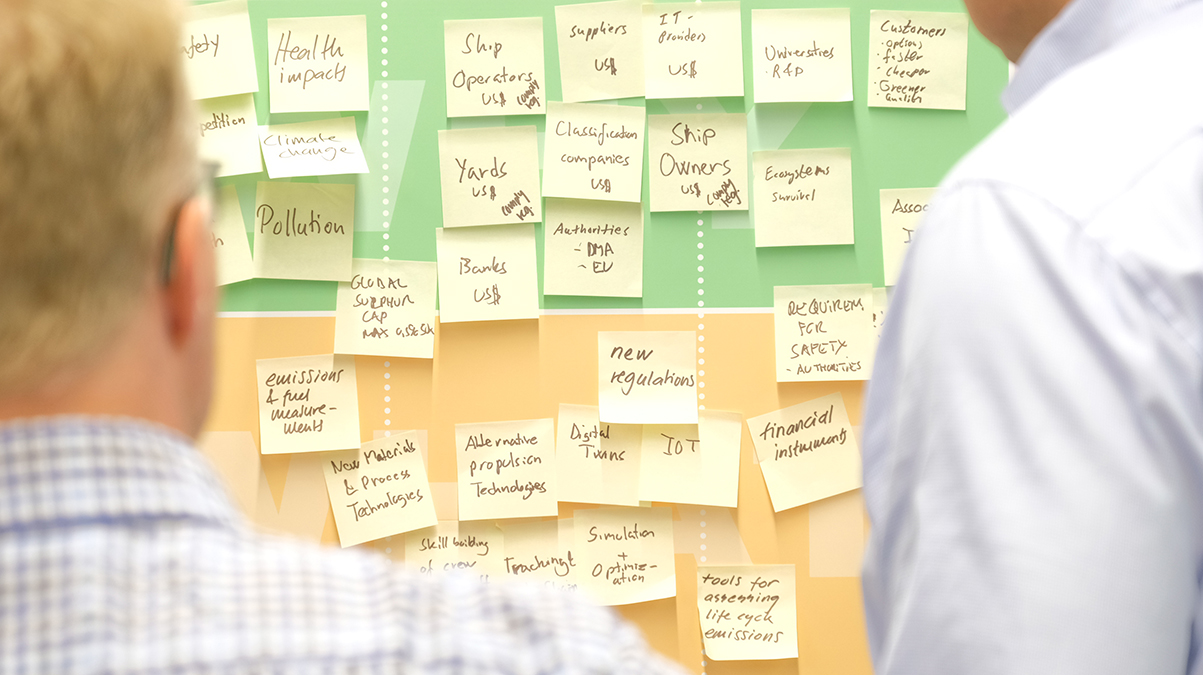ECOPRODIGI was officially launched in late autumn 2017 which means that the project is now over halfway through its implementation! Figuratively speaking, if the project was a marathon, we would have completed running a distance of over 21 kilometers by now. In reality, the halfway point means that for the last 18+ months or so the project consortium has been busy with evaluating and solving eco-efficiency bottlenecks in vessel performance monitoring, cargo stowage and shipyard processes, improving seedbed for eco-efficient digital solutions, and strengthening public support for maritime industry digitalisation. Not a meager set of activities and objectives by any standards.
So how have we fared so far? Notwithstanding some hiccups and minor glitches, we are happy to report that the project has made steady progress and is on track to achieving its objectives. Preliminary results from ECOPRODIGI’s three industry cases demonstrate that there is room to improve eco-efficiency and that digital solutions such as 3D scanning, digital performance monitoring technologies and eLearning tools can be of great benefit in achieving optimised and more sustainable processes in maritime sector.

Consortium minds in action (Gothenburg, spring 2018)
As we have delved deeper and deeper into the intricacies of our tasks at hand, it has been encouraging and inspiring to follow public discourse on the future of shipping. While many are still quick to point out that maritime industry is somewhat notorious in lagging behind in sustainable, data-driven development and digitalisation, there’s no denying the fact that the public is increasingly expecting the industry to clean up its act. The demand for cleaner and greener shipping is perhaps most apparent in ongoing discussions about low carbon shipping and air pollution control which are forcing the sector as a whole to evaluate and adjust its ways of operating. Such global concerns are finding their way into national policies, as has been the case in Finland where the Government Resolution on Finland’s maritime policy guidelines sets protection of the seas and sustainable maritime logistics among the priority areas while digitalisation, automation and data are included the main horizontal themes. In the United Kingdom, the government has published Clean Maritime Plan which details the country’s route map to clean growth for the maritime sector and pathway to zero-emission shipping. At the level of the European Union, competitiveness, decarbonisation and digitalisation are serving as the guiding principles for the EU’s maritime transport policy up to 2020 and beyond. These examples indicate that the work done in ECOPRODIGI seems to hit the spot.

Industry-academia cooperation (Turku, spring 2019)
Naturally, it hasn’t been just smooth sailing all the way and the first half of the project has taught us some valuable lessons. For starters, the size of the project consortium is both impressive and challenging. We are altogether 27 project partners and associated partners from 8 different countries representing both the private and the public sector. As impressive, invaluable and crucial such diversity is, it also places hefty demands for internal communication and project management in general. While we have managed to avoid setbacks and conflicts, we have sometimes struggled with coordinating and scheduling project activities. Fortunately, our project partners are committed to their tasks and responsibilities which has made little bumps on the road easier to navigate.

3D scanning hackathon (Klaipeda, summer 2019)
So what will happen next? There is certainly still a lot of work for us do before we can wrap up the project with a big bow. During autumn 2019, we will be busy with organising two policy events. The first one, “Shaping the future of shipping. What is needed to support the Baltic Sea region maritime industry to take the digital leap?”, is organised in Klaipeda on the 19th of September as part of the BSSSC Annual Conference. The second policy event will take place in Denmark during November 2019. In addition to the policy events, autumn 2019 will see ECOPRODIGI embarking on an interesting process of technology roadmapping, the results of which will eventually be made available for industry end-users and policy makers. Furthermore, work on our industry cases will continue as planned and syntheses of the achievements and findings on eco-inefficiencies, technology outlook and digital technology pilotings will be published later in 2019 and 2020.
And what about the final year of the project? Well, it looks like 2020 is going to be busy, interesting and full of exciting discoveries. Which for us is pretty much business as usual!

3D scanning hackathon (Klaipeda, summer 2019)


